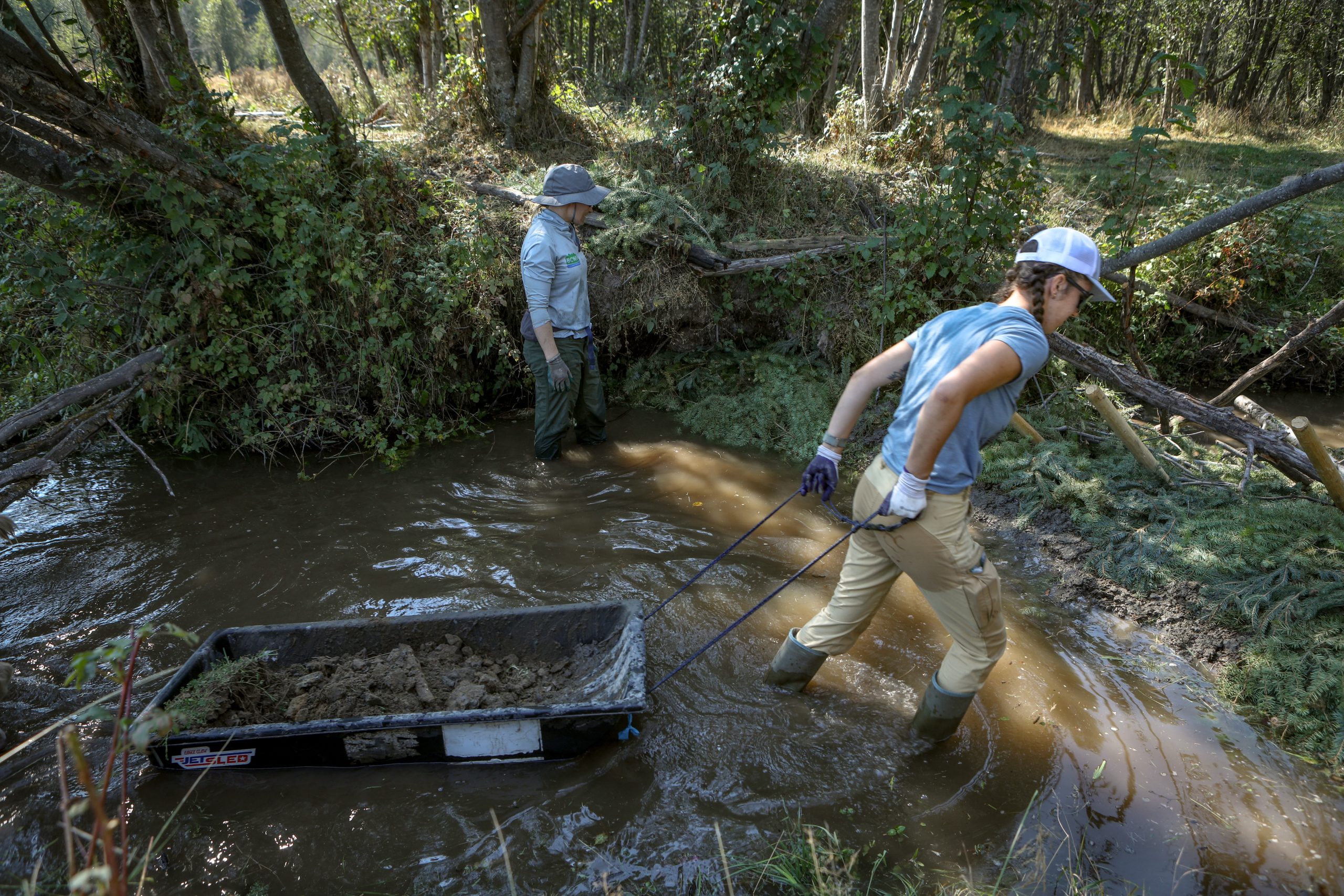Centuries-old Pentlatch fish trap panel connects K’ómoks, Qualicum people to their ancestors
The 550-year-old piece showcases ancient innovation while highlighting the importance of Indigenous communities preserving their own history
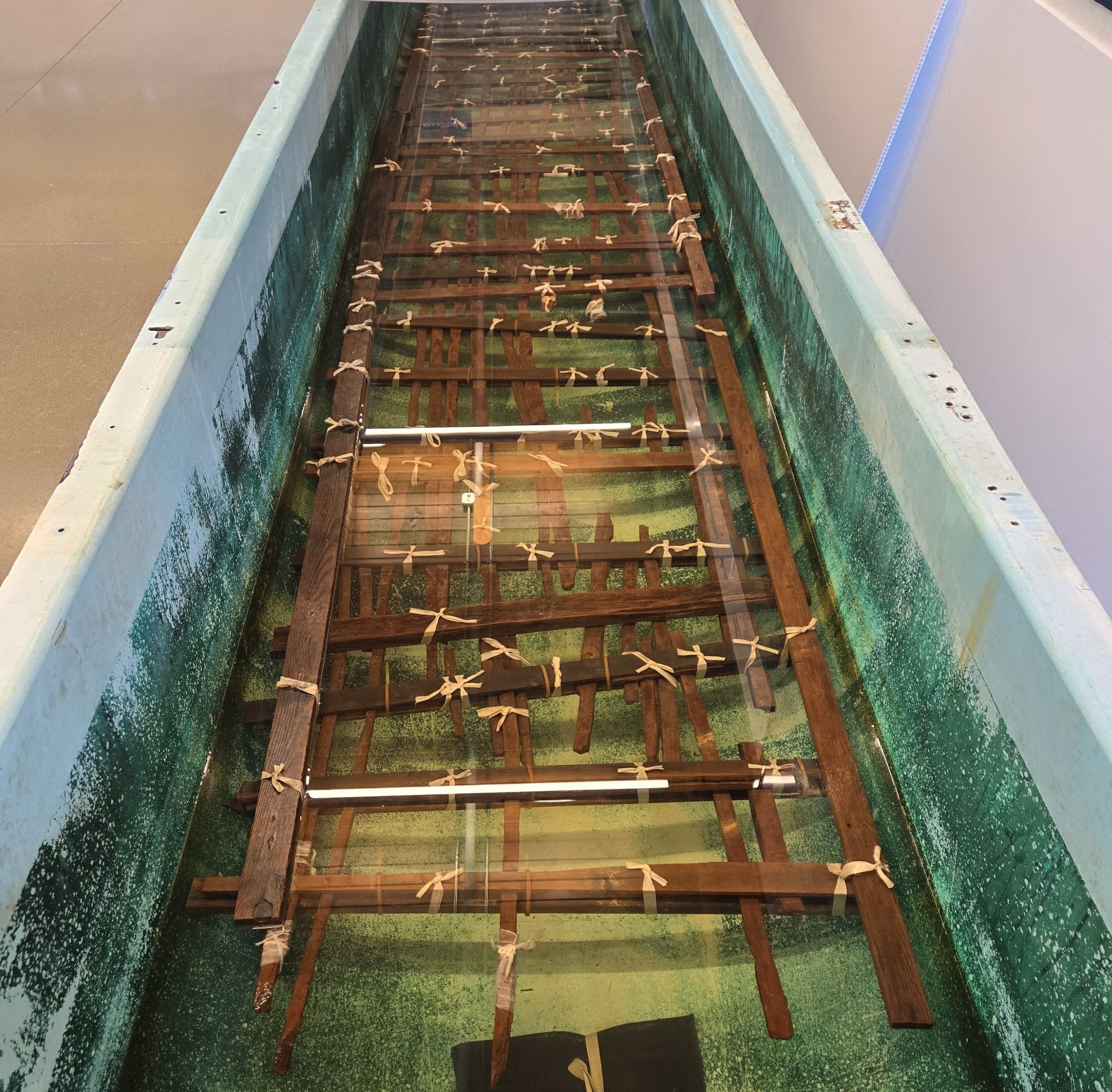
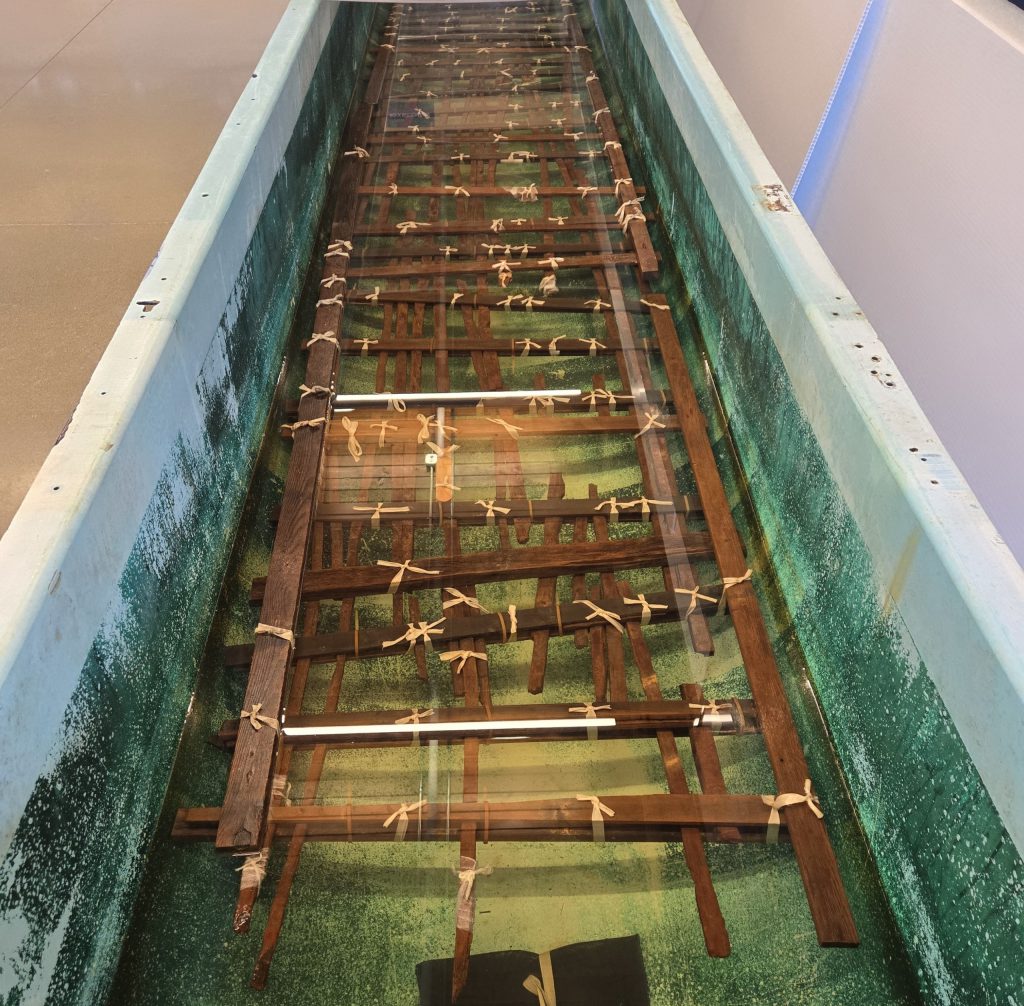
As a child, Pamela Mitchell recalls her father telling her about the ancient fish traps on the shoreline of K’ómoks territory, near her home.
As she learned about the traps, which were used over generations by her community, and their corresponding posts sticking out of the water, she recalls her dad telling her, “don’t touch! They are very old!”
Mitchell is Säsitla, and her ancestors joined to become the K’ómoks First Nation alongside the Sahtloot, Ieeksun and Pentlatch Peoples.
Mitchell is now the culture and language manager for K’ómoks First Nation, and says she wasn’t the only K’ómoks First Nation member who learned about the fish traps as a kid. Many generations of K’ómoks children would go down to the beach and hear about the cultural and historical significance of the traps.
Like Mitchell, Claire Everson learned about the fish traps from her father. Everson is enrolled in First Nations Studies at the University of British Columbia, and working as a repatriation assistant at K’ómoks over the summer.
Both women are part of a cultural heritage initiative led by K’ómoks First Nation and are supporting the conservation of a 550-year-old Pentlatch fish trap panel that is currently on display at Vancouver Island University’s Deep Bay Marine Centre Station.
The panel is the largest and most complete of its kind that exists today, and measures approximately six metres in length and 70 centimetres wide.
Everson — a K’ómoks descendant who has Pentlatch, Sahtloot, Kwakwaka’wakw and as well as Mi’kmaq heritage — says she is excited about this K’ómoks-led cultural stewardship taking place in her community.
“I just feel so special to even look at [the fish trap], let alone being able to work on it,” she says.
Panel part of a larger system of fishing traps
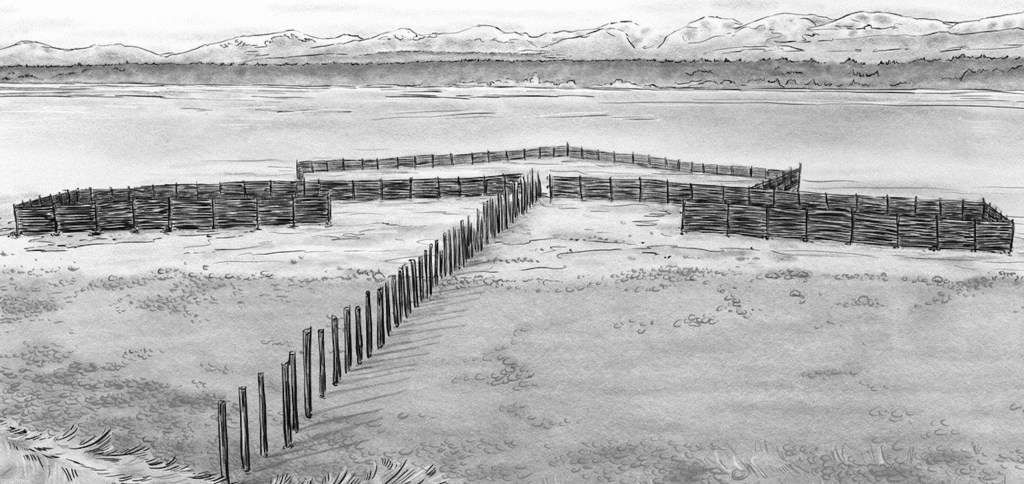
Though the trap is old in itself, it is part of an even more ancient system. K’ómoks has “recently extended the oldest radiocarbon date of the fish trap stakes in the harbour from 1,350 to 1,450 years ago,” according to a news release from VIU.
The panel was made by Pentlatch ancestors of K’ómoks and Qualicum First Nations. When it was used to catch fish, it was connected to large posts that are still seen poking up along the shoreline of K’ómoks territory. This specific kind of fish trap that the panel was attached to is called a chevron trap, due to its shape, and it caught fish using the tides.
“The long laths were made from western hemlock and the short laths were made from Sitka spruce. The cordage was made from roots or small tree limbs (withies),” says Lia Tarle, who works as an archaeologist and repatriation coordinator for K’ómoks First Nation, in a statement.
“Pentlatch (and, by 1850, other K’ómoks groups’) ancestors used elaborate fish traps to target herring and salmon in the K’ómoks Harbour, and also at Goose Spit and Saratoga Beach.”
Tarle explains that the traps were built perpendicular to the shore, with a leader line that directed fish into deeper water enclosures where they would remain trapped as the tide went out.
“Panels like this one were like fences that could be removed to release fish if too many were trapped for a sustainable harvest, or when they weren’t being used,” she says.
Qualicum First Nation’s elected Chief Michael Recalma says the trap’s technology showcases how efficient the communities were at fishing “even back in the old days or in the beginning of time.”
“It depicts the tie between us — K’ómoks First Nation and Qualicum First Nation,” he says in a statement.
“We’re tied in so many ways. The land is shared, it always has been, always will be. In Deep Bay, we also have stone traps that are close to this facility, and they are thousands of years old. Again, it shows a different way of fishing and how innovative we were to utilize nature and use the resources we had to trap the fish we needed.”
A seven-year process
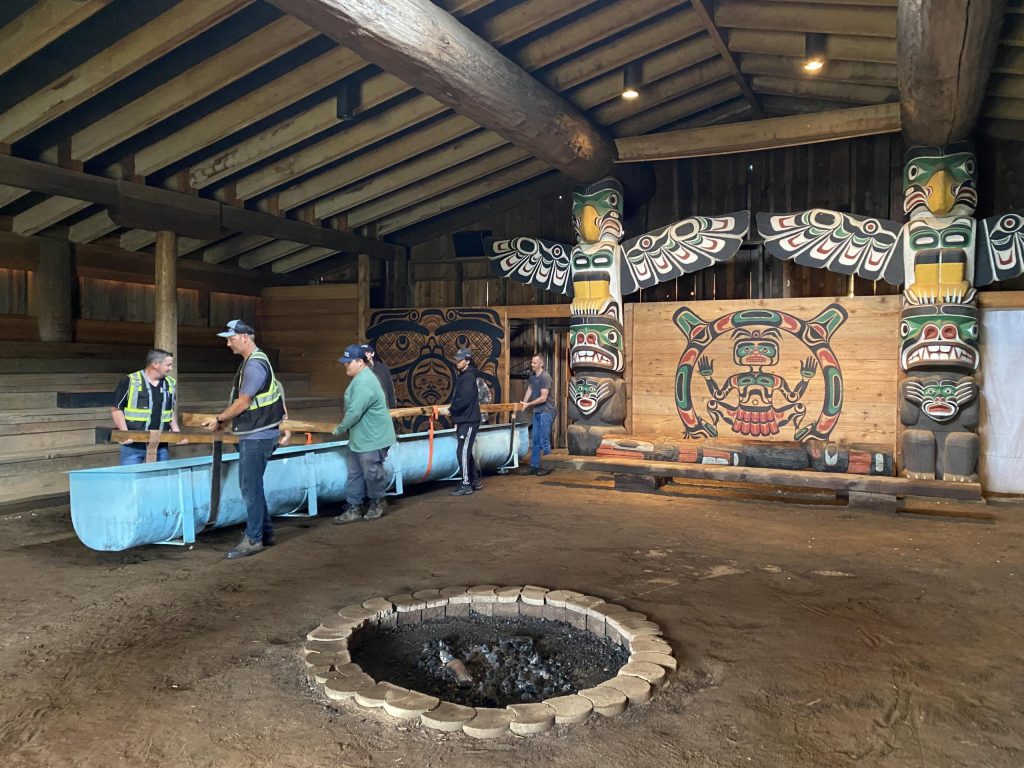
The chevron trap was revealed along the shoreline of K’ómoks Harbour in 2017, and a group of K’ómoks Guardian Watchmen, K’ómoks community members and archaeologists worked together to excavate it so that it wouldn’t deteriorate from air exposure.
From 2017 to 2020, the panel was held in the K’ómoks Guardian building. After that, it lived in the K’ómoks First Nation Bighouse until July 2024, when it was transported to the Deep Bay Marine Field Station. The panel is expected to stay there until December 2024, and members of the public can view it until then.
In the new year, the panel is set to spend some time freeze drying at Coastal Transportation and Storage Ltd. in Comox, which volunteered the company’s trucks, movers and freezer space. The panel is currently stored in a solution with water and polyethylene glycol to help preserve it before it transfers to the freeze drying process. After it dries, the nation will work to find a home that is suitable for it to stay long-term.
Tarle told The Discourse that the conservation of the panel has taken time because making sure it is stored and preserved properly requires a great amount of effort. Now, she says she is happy that there is enough staff to dedicate to doing so.
K’ómoks-led cultural stewardship
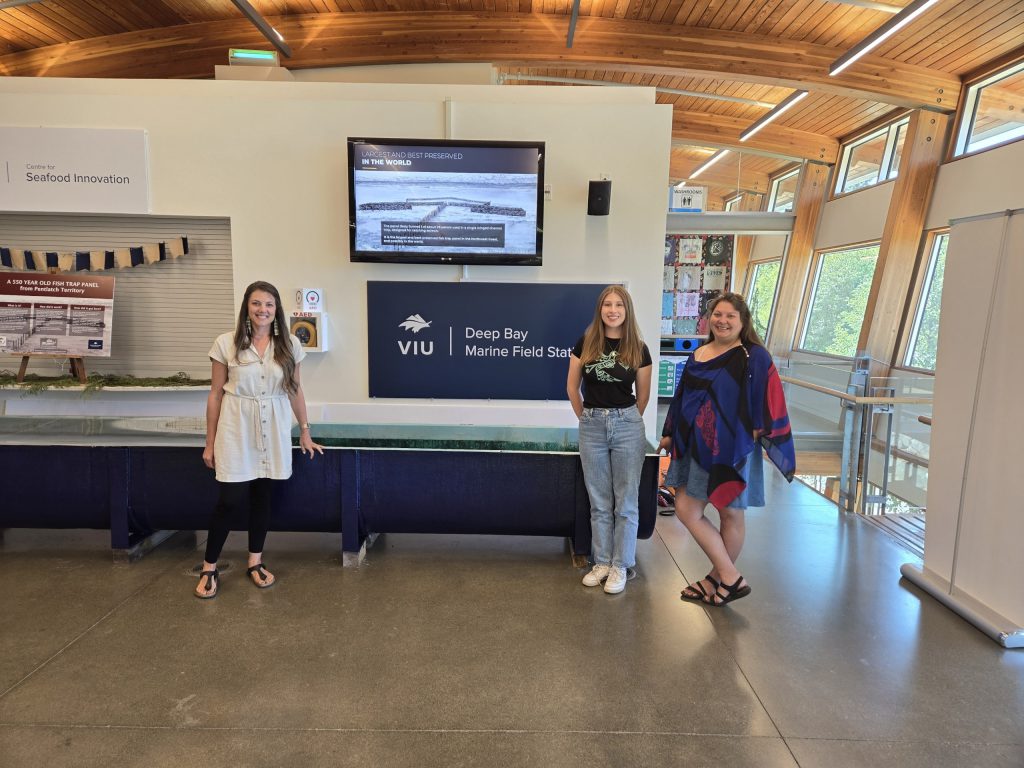
Sitting in a room with Mitchell and Everson at the Deep Bay Marine Centre Station, Tarle says the K’ómoks-led conservation and care for this fish trap is inspiring. She says it’s part of a broader initiative that K’ómoks First Nation is working on to help expand knowledge of the nation’s history on this land.
While Tarle notes that she herself is not a member of K’ómoks First Nation, Mitchell adds an important addendum.
“We hired you!” Mitchell says, with a chuckle.
Mitchell and Tarle both underline that the importance of these traps has long been recognized by K’ómoks and their ancestors and is not a new discovery.
“From our perspective,” Mitchell says, “it’s not about making sure that the name [of who found it] gets written down, [or about] who saw it first. It’s about preserving it.”
Some of the ancient stakes — part of the fish trap system — made news in the early 2000s as being “found” by a local archaeologist and community members. At the time, news outlets reported that “nobody really knew what they were” prior to archaeological discovery.
“There’s a misconception that the fish traps were discovered by archaeologists because they were covered in sediment from at least 1886 (when well-known ethnographer Franz Boas visited) until 1946 when the K’ómoks community witnessed the stakes pop up from the riverbank during an earthquake,” Mitchell says.
“But K’ómoks Elders have always known about them. In 1936, my Säsitla ancestor George Mitchell talked about the Pentlatch fish mazes in an interview with an ethnographer. He said the traps were owned and maintained by specific families who had priority access to fish.”
The future of K’ómoks cultural heritage management
Tarle says seeing students like Everson doing this work is inspiring for the future of both repatriation and cultural heritage management.
In the future, Everson, Mitchell and Tarle say there are discussions about seeing more of K’ómoks First Nation’s important ancestral areas acknowledged throughout the Comox Valley. This means referring to places with their ancestral names and sharing information about them.
The panel also fits into wider work K’ómoks is doing around cultural management. For example, K’ómoks is in the process of submitting formal repatriation requests for more of its belongings that are being held in institutions.
In an email, Tarle added that repatriation work is a big undertaking, and that K’ómoks is searching for funding to cover the various ceremonial and travel costs associated with repatriations. She said that although there has been a wave of government commitments to implement the UNDRIP, there still needs to be better funding and staffing at museums to fulfill the commitments.
“There’s a massive backlog of Nations waiting for repatriations to actually happen.”
The panel, however, is an example of K’ómoks taking control of their cultural heritage from the outset.
“Which is important for many reasons relating to sovereignty/enacting rights, and cultural revitalization, but as a byproduct, it also circumvents the need for repatriations in the future.”
Candace Newman, elected councillor for K’ómoks First Nation says in a news release that protecting and preserving K’ómoks cultural heritage right now is particularly important.
“Our cultural heritage sites are under threat from the fast rate of development in the Comox Valley, so we are also investing in protecting our cultural heritage by implementing our own archaeological permitting system,” she says.
Editor’s note: This is a corrected story. A previous version erroneously identified the size of the fish traps as 16 cm wide. In fact they are 70 cm wide.
Author
Latest Stories
-
‘Bring her home’: How Buffalo Woman was identified as Ashlee Shingoose
The Anishininew mother as been missing since 2022 — now, her family is one step closer to bringing her home as the Province of Manitoba vows to search for her
-
‘NDN Giver’ exhibition showcases the art — and responsibility — of potlatching
From mugs to prints, masks and blankets, a new Bill Reid Gallery display celebrates the ancient Northwest Coast gift-giving tradition





